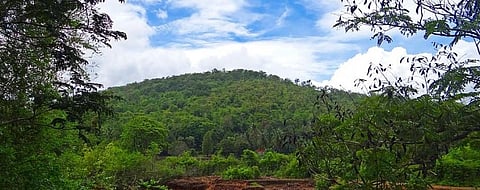Beyond conservation, why our natural ecosystems need restoration
Ecosystem degradation has emerged as one of the biggest environmental threats around the world over the last three decades. Almost all our ecosystems, terrestrial or otherwise, stand degraded to varying degrees due to a mix of factors such as developmental pressures, population growth, over-exploitation, etc.
Other stressors such as invasive alien species and climate change also impact many ecosystems.
While the impact of ecological degradation on biodiversity is well-known, its impact on ecosystem services is less appreciated. Degradation of natural ecosystems in the Western Ghats pose a direct threat to water security, and in turn, to livelihoods of millions of people in the plains. Degradation, therefore, has serious implications for human well-being and economic sustainability.
Traditional approaches to ecological conservation focus on protecting and keeping natural spaces inviolate. However, this has proved to be nearly impossible, thanks to a persistent increase in anthropogenic pressures.
Many of our ecosystems today are damaged beyond unassisted self-recovery. Mangroves along our coastline are severely impaired and need intervention. Many protected areas like national parks stand ecologically unprotected due to invasion by species such as Lantana camara.
We are, therefore, in a situation where conservation alone is no longer enough.
What is ecological restoration?
Ecological restoration is defined as “the process of assisting the recovery of an ecosystem that has been degraded, damaged or destroyed”. Ecosystems are in a constant state of evolution.
Hence, the objective of restoration is to assist an ecosystem to recover to its pre-degradation trajectory (or close to it). This is done through a scientific process of benchmarking with reference models from the same native ecosystem.
Ecosystem integrity, covering both biotic and abiotic aspects, forms the foundation of ecological restoration. A restored site is expected to have the key structural and species characteristics that are representative of the native ecosystem type it belongs to.
Key principles underpinning ecological restoration. Source: The SER international standards
Restoration adopts a holistic approach focused on all elements of an ecosystem such as soil, hydrology, flora, fauna, etc. This helps build resilience and regenerative ability of the ecosystem.
Importance is given to all groups of flora such as grasses, shrubs, trees, etc. as well as to habitat needs of different groups of fauna ranging from insects to large mammals.
These are essential differences between restoration and other rehabilitation approaches such as afforestation and reforestation, which mainly focus on planting of saplings of a few tree species.
Such methods often lead to creation of areas low in resilience and biodiversity, and ecosystem alteration is a common result.
Growth of the restoration discipline
Significant strides have been made in both the science and practice of restoration over the last three decades, with specialisation across diverse ecosystems such as tropical forests, grasslands, rivers, mangroves, oceans, urban habitats, etc. Functional specialisation has grown in many aspects such as seed science, soil conservation, invasive species management, etc.
Restoration methodologies have been developed worldwide for different degradation scenarios including for extreme ones like landslides, mining, forest fires, etc. The scale of projects is also increasing from site-level initiatives to landscape-level projects.
An important milestone for the discipline has been the publication of the standards for the practice of ecological restoration by the Society for Ecological Restoration, the leading global body for the discipline. Of universal application, these standards provide the core principles and framework for restoration.
The ecological recovery wheel (left) and social benefits wheel (right) help measure the ecological and social impacts of a restoration project.
Source: The SER international standards
They also include leading-edge monitoring methods to measure the ecological as well as social outcomes of restoration initiatives.
The Bonn Challenge declaration and the United Nations declaration of 2021-30 as the ‘Decade of Ecosystem Restoration’ have placed ecological restoration at the forefront of the world’s biodiversity and climate change agendas.
Research findings indicate clearly that biodiverse ecosystems are far more effective in sequestering carbon than monoculture plantations. This should encourage climate change programmes to embrace restoration principles so that biodiversity goals are achieved simultaneously.
The Indian context
Ecological restoration is still a developing discipline in India, with a limited number of practitioners and projects. Most initiatives are small and site-specific. On the other hand, the need for restoration is considerable and urgent.
For example, most forests lying outside protected areas have been degraded due to high human pressure. Our protected areas, in turn, are affected by factors like invasive alien species.
At a ballpark estimate, around 40 per cent of our forests may need to be restored. If we extrapolate this to other ecosystems, one can see that the opportunity to improve biodiversity, improve quality of human lives and increase good habitats for fauna is significant. More importantly, restoration has the capacity to generate substantial rural livelihoods and reduce human-wildlife conflicts.
India has an ambitious target of restoring 26 million hectares of degraded lands by 2030. Reaching this target will require certain key enablers to be in place.
First, achieving this scale will need a large number of well-trained restoration practitioners. Restoration ecology has a rather low presence in academic curriculum in India at present and this needs attention.
We will also require separate mechanisms to train field-level personnel who will be handling implementation and monitoring of programmes. Second, we have to make sure that projects adhere to the core principles of restoration. The international standards can help in this regard, with suitable adaptation for Indian conditions.
Last, a typical restoration project lasts well over five-six years, and calls for sustained funding and focus. These enablers will make the difference between successful restoration and otherwise.
The author is a certified ecological restoration practitioner and managing trustee of Junglescapes, a grassroots NGO working on restoration of forest habitats in South India. He is a member of the Board of the Society for Ecological Restoration.
Views expressed are the author’s own and don’t necessarily reflect those of Down To Earth


